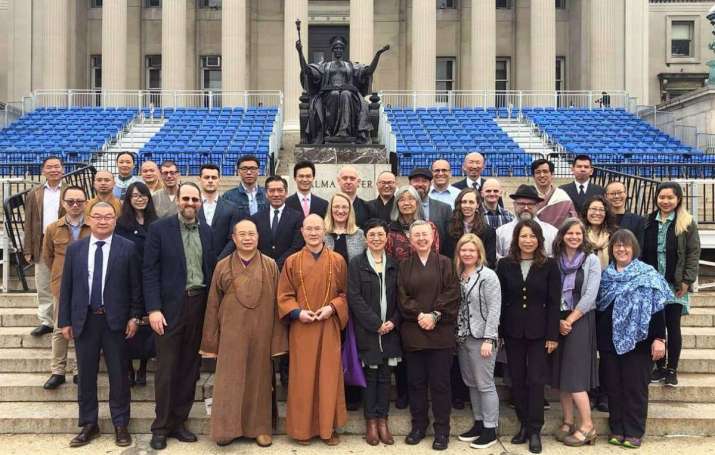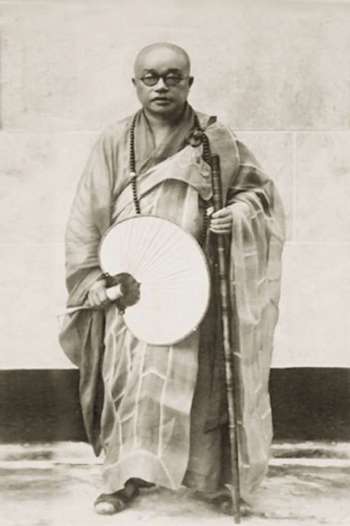
The Department of East Asian Languages and Cultures at Columbia University hosted an international conference on Buddhist chaplaincy and faith-based social services from 4–5 May. The conference was co-sponsored by the International Center of Chinese Buddhist Culture and Education in the US and the International Center for Buddhist Studies at Renmin University in Beijing.
Aims of the conference, which drew around 40 scholars, monastics, and professionals from China, Japan, and the US, included understanding the social context that has given rise to Buddhist chaplaincy, noting that it is a result of the adaptation of Buddhism to modern society, as well as the particular areas where it is practiced today.
“Discussions ranged from Buddhist chaplaincy in hospitals, hospices, universities, and various branches of the military to addiction recovery, disaster relief, and rehabilitation,” according to Nathan Jishin Michon, who attended from Japan where he is a Fulbright fellow at Tohoku University and doctoral candidate at the Graduate Theological Union’s Institute for Buddhist studies.
“It’s the first conference uniquely dedicated to the field of Buddhist chaplaincy in the US and beyond,” said Venerable Guan Zhen, a PhD student at the Department of Philosophy at Renmin University and secretary of the International Center of Chinese Buddhist Culture and Education. “It honors those who have been working in the field, employing Buddhist insights such as compassion and patient endurance to alleviate suffering in our society.”
Rev. Dr. Monica Sanford, assistant director for spirituality and religious life at Rochester Institute of Technology, presented at the conference on “Preparing Buddhist Chaplains to Serve in Higher Education.”
“The field and profession of Buddhist chaplaincy is quickly developing here in North America,” she told Buddhistdoor Global. There is interest about if this field and profession could be transplanted to China. “There is precedence for this from within Chinese Buddhism, particularly from the teaching of Master Taixu, an early 20th Century Chan Humanistic Buddhist teacher. He was very ahead of his time, as the presentation on him demonstrates, but his efforts were cut short by political and social transformation in China after WWII, including his own death far too young.”
Sanford continued, “His Dharma heirs have carried on his work, including founding the ICCBCE [the International Center of Chinese Buddhist Culture and Education] in the US, which was the topic of another presentation, and of which I am among the first generation of Buddhist chaplains ordained [as lay ministers] by that organization. There are now 34 of us, mostly working in healthcare and education, plus a few in the military and other settings.”

Rev. Dr. Victor Gabriel of the Master of Divinity program at University of the West in California, who also attended, told Buddhistdoor Global that, “The Association of Theological Schools advises that the teaching of chaplaincy encompasses ‘remembering the past, evaluating the present and envisioning the future’ and I felt that this conference did just that. We looked at source sutras, the work of Ven. Master Taixu, then moved to how we were doing Buddhist care and chaplaincy in US, China, and Japan, then imagined future collaboration. It gave the sense that Buddhist chaplaincy in US, China, and Japan has matured and that we have consolidated our positions in their respective contexts.”
Speaking about the outcomes of the two-day gathering, attendees were optimistic. “Being able to not just hear each others’ stories, but mingle and connect through breaks allowed for plentiful connections to form and may have planted the seeds of cross cultural developments for years to come,” stated Michon.
Speaking of the ways that the conference has helped to bridge divides in contemporary Buddhism, Gabriel noted that, “The conference movingly accomplished Chenxing Han’s five points: 1. From hubris to humility; 2. From assumptions to curiosity; 3. From narrowness to diversity; 4. From enclaves to interconnections; and 5. From two Buddhisms to intersectional Buddhism.”
See more
Conference of Buddhist Chaplaincy and Faith-based Social Services
International Center of Chinese Buddhist Culture and Education
The Invisible Majority, by Chenxing Han (Lion’s Roar)














